Page 1 of 11
Bushka features a modified version of Fanorona's way of capture. Capture by withdrawal has been disposed of and capture by approach by a single piece is restricted to the actual piece contacted, rather than the whole line. This reduces the basic capture to a scenario of two men on three squares, just like Draughts, and in fact very similar: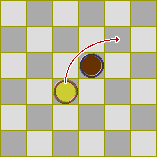 draughts | 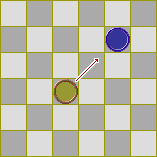 bushka | Because of the similarity, the idea came to see how 'contact capture' would behave in the best available framework of rules and conventions: the one of International Draughts. Two of these are:
|
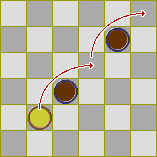 draughts | 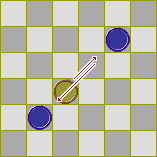 bushka | In Draughts it is not possible to make a 180 degrees turn (2) but in Bushka you can. In Bushka a capture cannot proceed in the same direction (1) but in Draughts you can. Different implications, but very similar behaviour. |
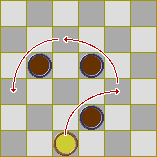 draughts | 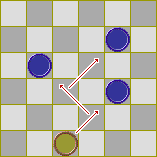 bushka | Of course the capturing pieces in both methods can change direction on any square. Another implication to realize is that in Bushka a piece cannot reach the backrow in a capture, so there's no need for a rule regulating the event. |
More importantly: something was missing. Just putting a new monkey in the cage turned out a game not quite as inspiring in its combinations as Draughts itself.
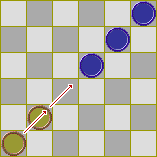 linear capture before ... | 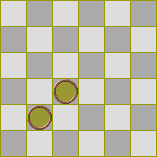 ... and after the move | The remedy was taken from its direct ancestor Fanorona and is called linear capture. But unlike Fanorona, the condition in Bushka is linear movement: moving a straight uninterrupted line of men one square forward as a whole, provided the square in front is vacant. If a moving line contacts a straight uninterrupted opposing line of men, the latter is captured as a whole. Thus Bushka became the source of Draughts' style linear movement. |
Rules
The rules mention men and kings. A king is a promoted man. If the difference doesn't matter, they may also mention pieces, for instance 'the number of pieces on the board'.
On the board there are squares and lines. These are always dark squares and oblique lines, like the 'e-line' or the '5-line'. A square is identified as the intersection of two lines. The 1- and 0-line each count but one square.
The five most distant squares from a player's point of view are called the back rank.
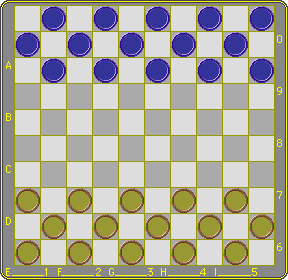 | The diagram shows the board and the pieces in the initial position. There are two players, black and white. White begins. Players move - and must move - in turn. Object
Movement Capture has precedence over a non-capturing move. If the player to move has no capture to make, he has the following options:
|
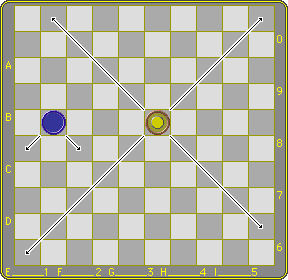 | Piece movement
|
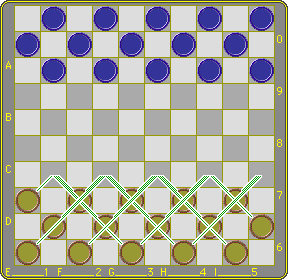 | Linear movement
In actual play not all men of a line of men are moved. One simply picks up the last man of the line of men one intends to move, and puts it in front. This may be any man of the line of men from the second to the last. In the diagram all white's initial options are displayed. |
